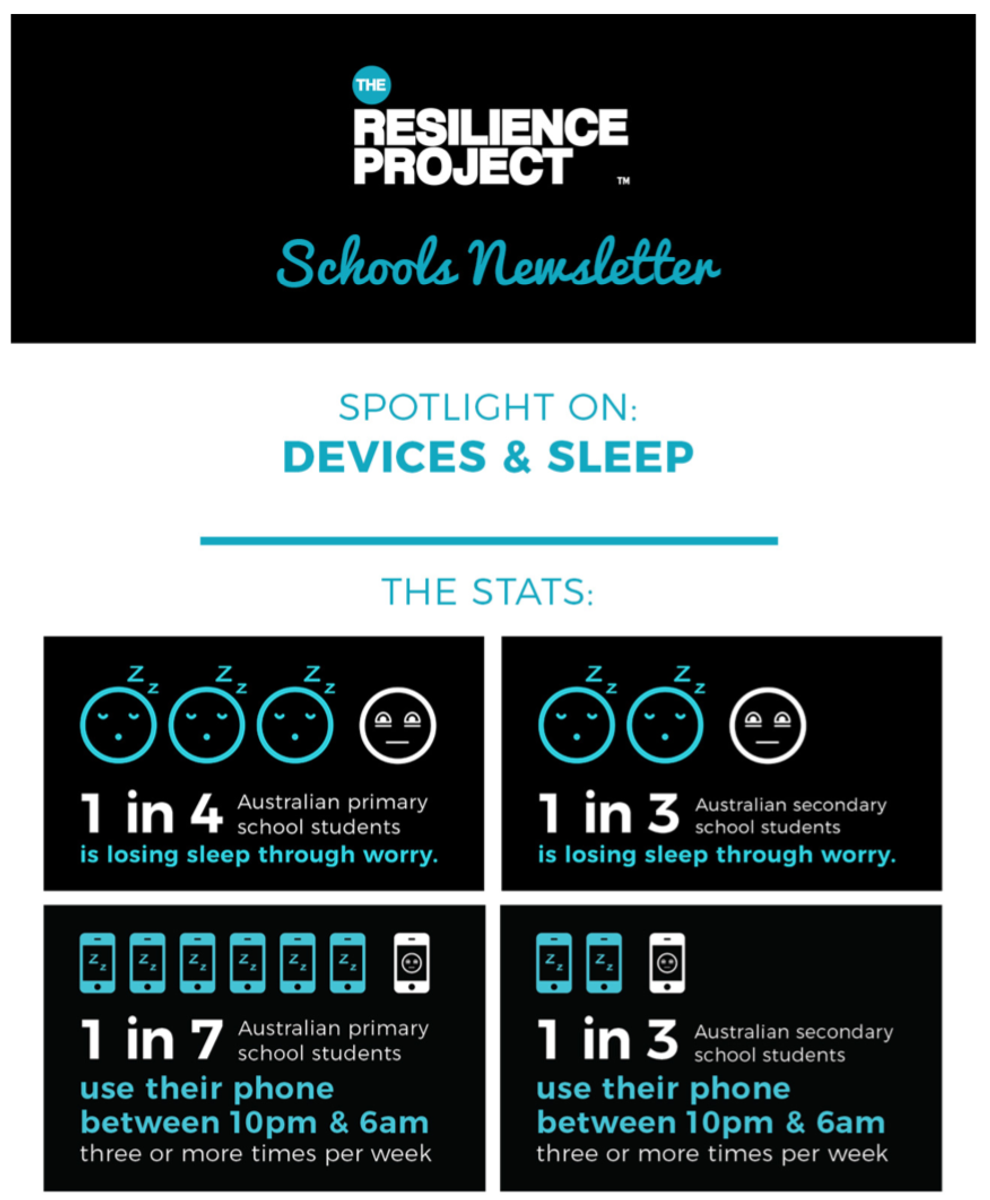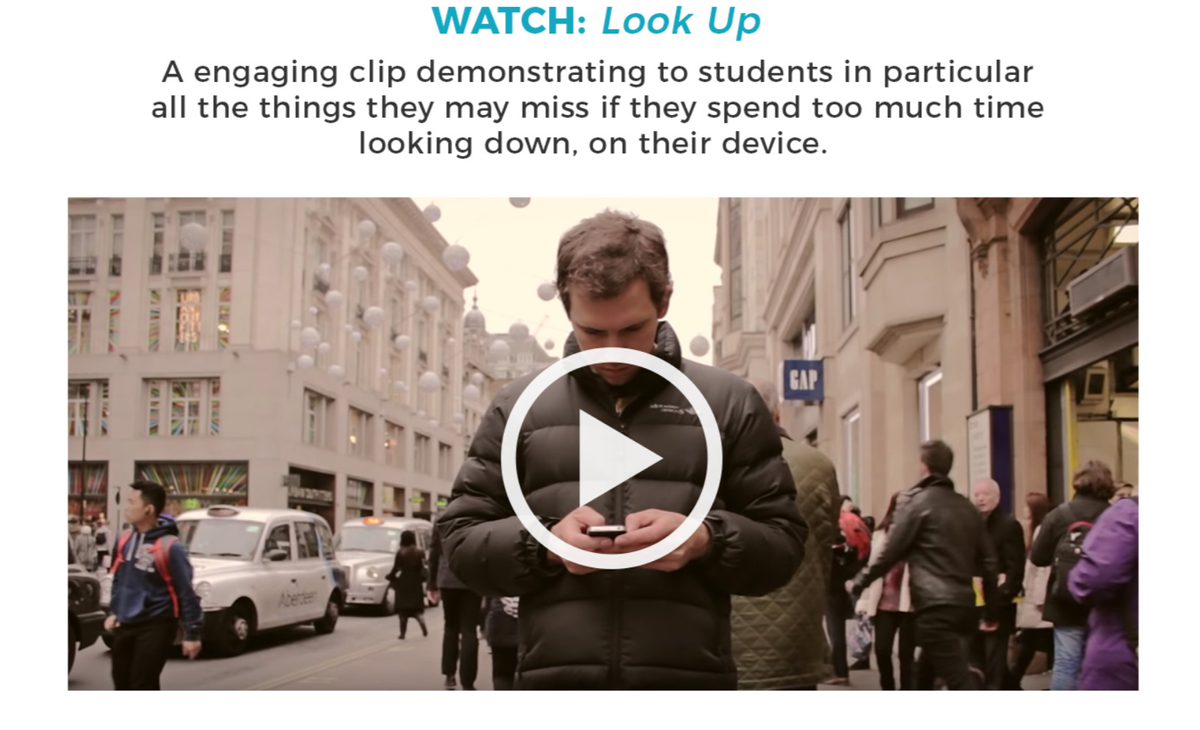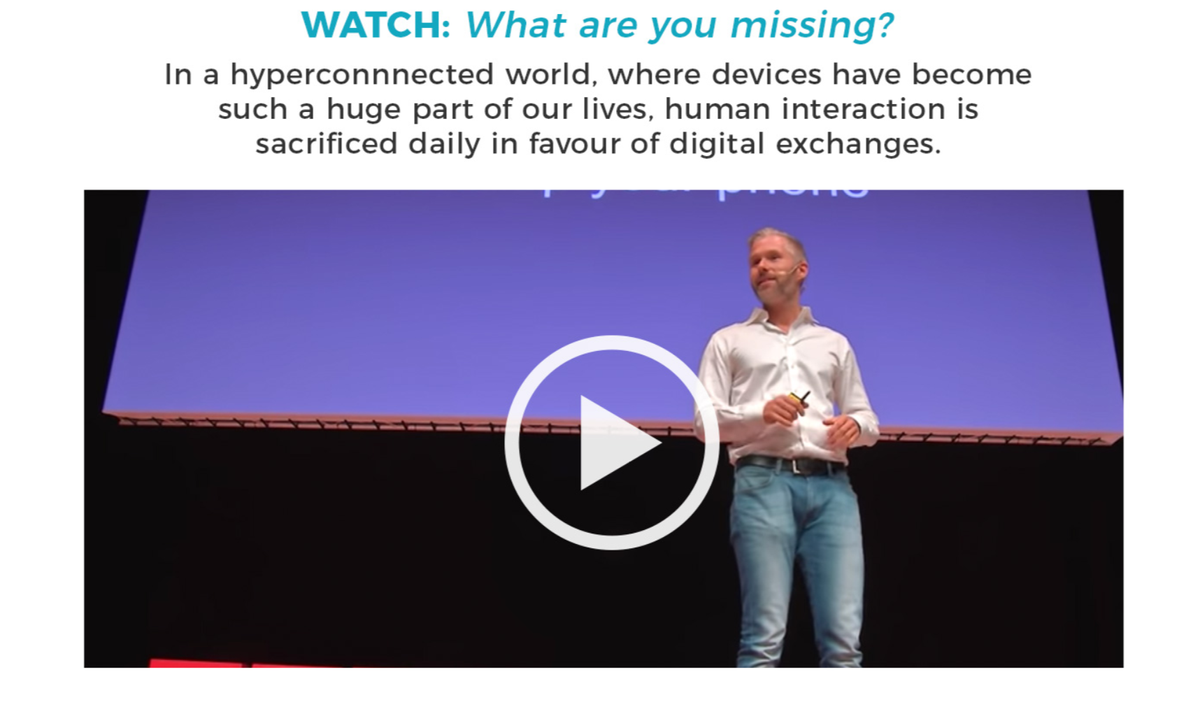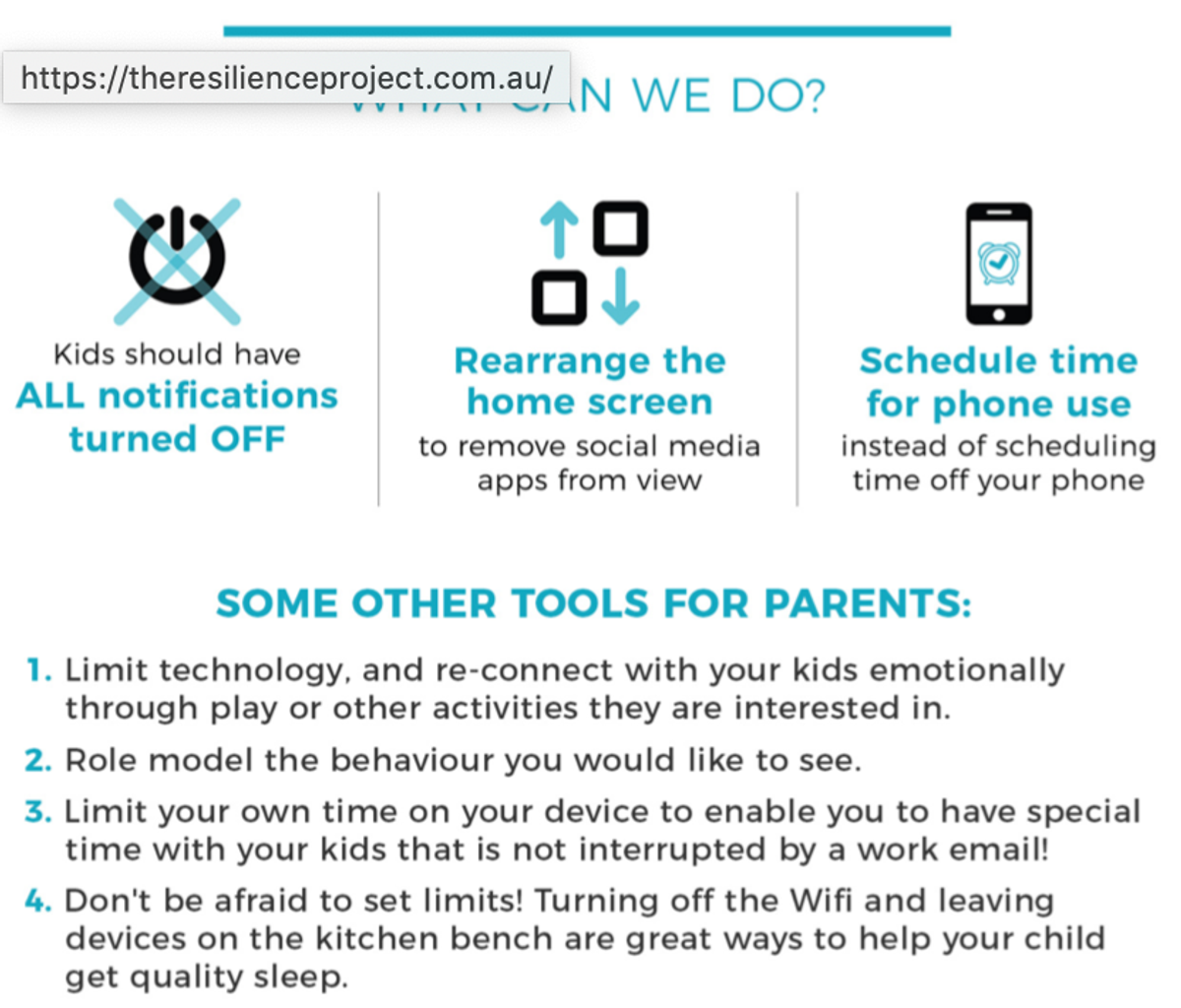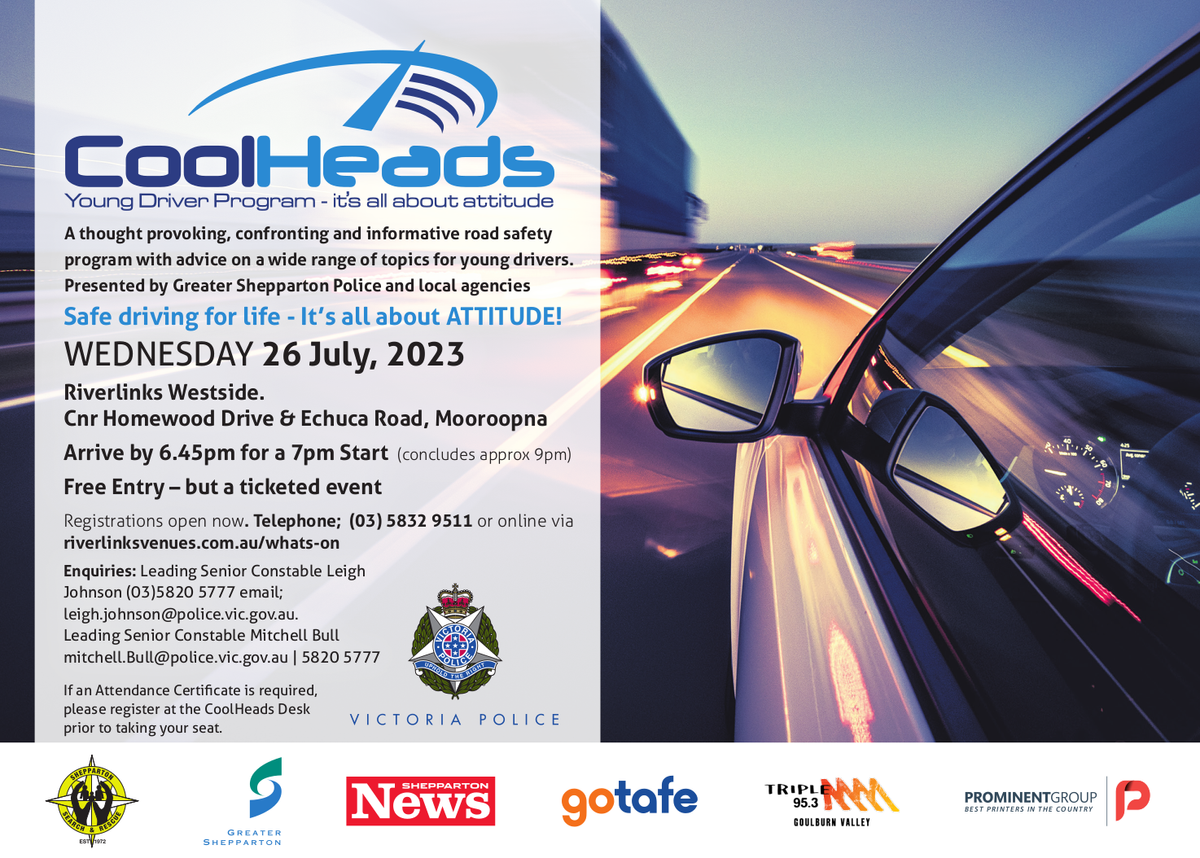Community and Wellbeing
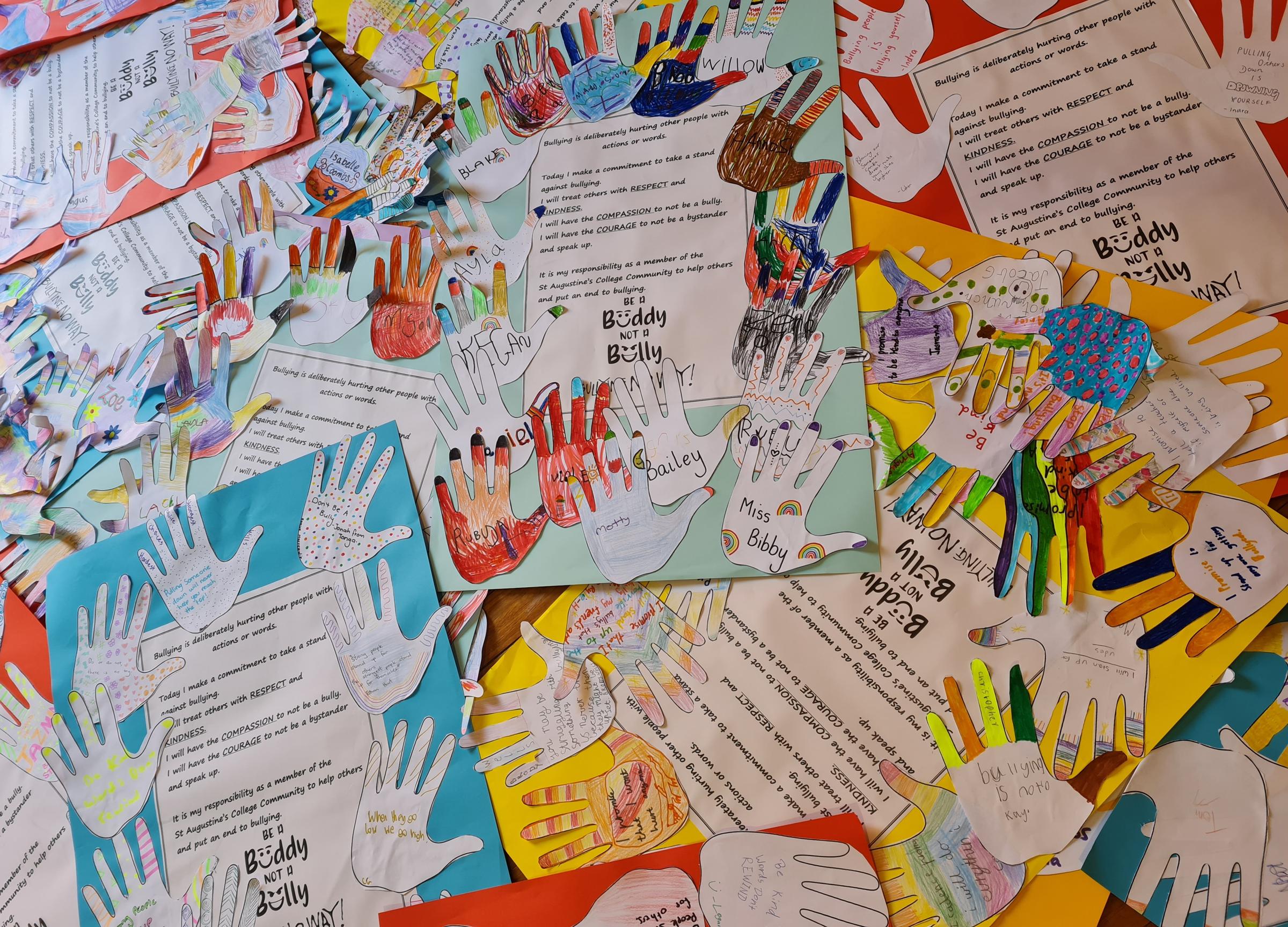
Healthy Sleep in Children
Last week, staff participated in a professional learning session with Luke from “The Resilience Project”. During this session, we looked at the data from a recent survey that was conducted with our Year 3-12 Students. The survey is part of the ongoing work we do with TRP to help ensure we have healthy and well adjusted students who arrive at school- ready to learn. An interesting aspect of the results highlighted that a large proportion of our students are not getting the recommended 8-10 hours of sleep per night.
Below is some information that you may find helpful for developing good sleep patterns in your child/ren.
Sleep is essential for growth, immunity, learning and memory and is important for helping a child heal and recover. Healthy sleep means a good quantity and quality of sleep, with regular sleep routines.
What happens if my child doesn’t get enough sleep?
A child who does not get enough healthy sleep may experience difficulties with concentration, memory, regulating their emotions, organising tasks and creative thinking. These children may be easily distracted, irritable, disruptive or generally hyperactive and restless. A lack of healthy sleep has been linked to mental health problems, poor growth, excessive weight gain and reduced school performance.
How much sleep does a child need?
| Age | Recommended sleep hours per 24-hour period |
| Pre-schoolers: 3 to 5 years | 10 to 13 hours |
| Grade-schoolers: 6 to 12 years | 9 to 11 hours |
| Teens: 13 to 18 years | 8 to 10 hours |
Good sleep habits
Have a regular sleep pattern. Your child should keep regular times for going to bed and waking up. These times should be the same or similar on weekends and holidays. The 24-hour body clock that controls sleepiness and wakefulness works best if there is a regular sleep routine.
Have a consistent pre-bedtime routine. This will help your child settle and prepare for sleep. It may include reading quietly, a warm bath or a warm milk drink. Avoid exercise or stimulating play in the hour before bedtime.
Limit access to electronic devices (including TV, smart-phones, tablets and computer games) and bright light exposure in the one to two hours prior to bedtime. Exposure to bright light or the LED light from electronic devices can reduce the evening levels of the sleep promoting hormone, melatonin, making it more difficult to fall asleep. Electronic devices should remain out of the bedroom where possible.
Ensure the sleeping environment is quiet, dark and comfortable. Children should sleep in their own bed. If a night light is required, a red light is preferred. If background sound is required, soothing, gentle music is preferred. The bedroom should be used for sleep only and not study or play if possible.
Daytime exercise and natural light exposure may improve sleep at night. Children who are inactive through the day and/or are not exposed to natural sunlight, particularly early in the morning, may have difficulty falling asleep at night.
Limit caffeine intake. Caffeine is a stimulant that prevents sleep. Caffeine is present in tea, coffee, chocolate, energy drinks and some soft drinks. Caffeine is best avoided in children and certainly should be avoided after midday to avoid interfering with sleep.
‘The Resilence Project’ has also provided this fact sheet that contains valuable information and links to additional resources for support.
Source: https://www.childrens.health.qld.gov.au/fact-sheet-healthy-sleep-children/
Sleep and Devices
FOR STUDENTS
Repeat Notices.....
Cool Heads Young Driver Program
Registrations for the 2023 Cool Heads program are now open. This is a free event, but with limited places, so first in best dressed.
This event is highly recommended for learner drivers and those on their Ps to attend and parents/guardians also encouraged to attend with their young drivers.
A thought provoking, confronting and informative road safety program with advice on a wide range of topics for young drivers.
Presented by Greater Shepparton Police and local agencies.
Safe driving for life - It’s all about ATTITUDE!

